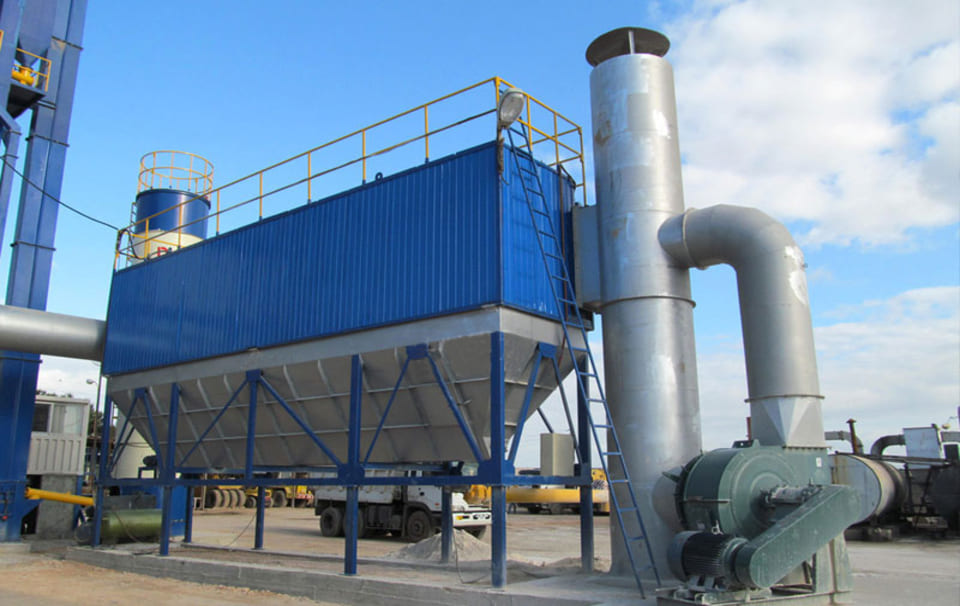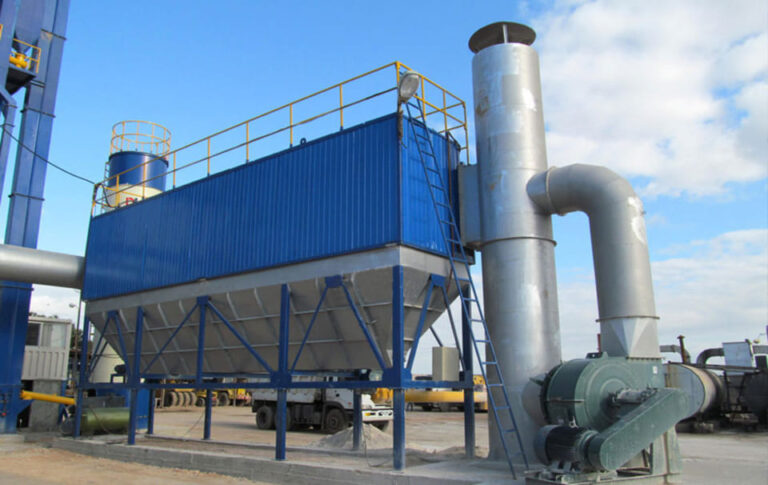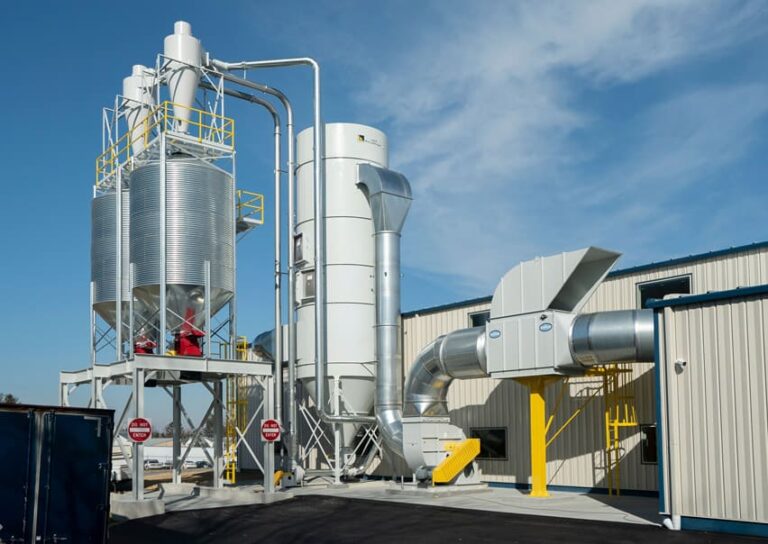BAGHOUSE /DUST COLLECTOR PLANTS
Baghouse dust collectors and cartridge dust collectors are two common types of industrial air cleaning systems that provide numerous benefits to the well-being of a facility and those working in it. A few benefits of baghouse and cartridge dust collectors include:
- Clearing the air
- Improving employee efficiency
- Increasing employee retention
- Ensuring a safe working environment
- Reducing equipment maintenance costs
Baghouse dust collectors use long, cylindrical bags (or tubes) made of fabric to filter dust particles out of the airstream. The dirty air enters the dust collector and is directed to the filters of the baghouse. Dirty air passes through the bags where the dust particulate is collected outside the filter while clean air passes through the filter. The clean air is released into the environment or recirculated back into the facility.
Most baghouses have a filter clean system of one type or another. We have experience in manufacturing the following types of Baghouse filters.
- Reverse-Flow: This utilizes a fan that continuously moves around and blows air into the center of a bag, which forces the dust off the outside of the bag.
- Shaker System: This is the most basic filter cleaning system and typically uses a motor to shake the dust particulate off the outside of the bags.
- Pulse Jet Filter: This method shoots a blast of compressed air down the center of a bag and forcibly blasts the dust off the outside of the bag.
In all cases, once the dust is off the bag, it should end up in the hopper, where it will ultimately be deposited into a container of choice.
WHEN A BAGHOUSE DUST COLLECTOR IS BEST
Choosing between a baghouse system and a cartridge system is primarily application-based, though it can be a case-by-case situation. There are many factors that play into this.
ADVANTAGES OF BAGHOUSE DUST COLLECTORS –
High Temperature
Baghouse dust collectors can withstand higher temperatures than cartridge dust collectors. If your application requires temperatures above 250 degrees Fahrenheit, it’s often best to opt for a baghouse system.
Sticky Materials
Sticky or adhesive particulates are better collected in a baghouse dust collection system. A bag filter is better suited for the release of the sticky particulate than a cartridge filter. Therefore, a baghouse dust collector is better for adhesive applications than a cartridge dust collection system.
Heavy Dust Load
The more dust you’re collecting, the more likely you are to need a baghouse dust collector. Although not as efficient as a cartridge, baghouse dust collection systems are great for particulates in the five micron-plus range and are great with heavy dust loads.
Durability
Some of the most challenging and heavy loading applications benefit from the use of baghouse dust collectors. The bag filters are durable, flexible and typically have a longer service life than cartridges, reducing the frequency of filter replacements.
BAGHOUSE DUST COLLECTOR FILTERS –
This type of filter consists of cylindrical bags (or tubes) made of fabric. Bag filters are typically used for heavier loading applications.
- Bag filter efficiencies are closer to five microns
- Fabric bags typically have a longer service lifecycle than cartridge filters and handle a more demanding application with heavier dust, such as wood and grain dust.
- Bag filters are most effective when the particulate is larger and the loading is extreme.
The filters are key to the performance of a dust collection system. Using the wrong filter type can result in an inefficient dust collector. Using the right filter matters, and the first step in determining which type of filter you should be using comes down to the application you’re using it for.
- Robust construction
- Ease of operation
- Corrosion free
- Tailor made to fit your requirements.
- Highly controllable
- Very efficient
- Automotive Industry
- Cement and lime Industry
- Iron and steel Industry
- Melt-shop de-dusting Industry
- Mining Industry
- Oil and gas Industry
- Paper and pulp Industry
- Petrochemical Industry
- Power generation plant Industry
- Sugar Industry








